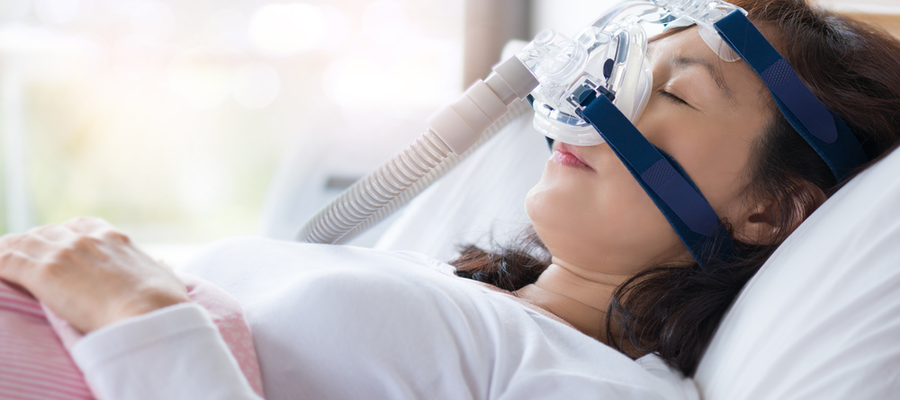Sleep Apnea – Causes and Treatment
Obstructive Sleep Apnea (OSA) is the most common form of the sleep disorder Sleep Apnea. The muscles in the back of the throat close, blocking the airway and causing a disruption in breathing (for at least 10 seconds) repeatedly during sleep.
Sleep Apnea causes frequent sleep disruptions and low blood oxygen levels. This combination has been linked to an increased risk for heart disease, high blood pressure, stroke, obesity and diabetes. However, modern medicine offers several effective treatment options.
Who has Sleep Apnea?
More than 18 million American adults have Sleep Apnea. Worldwide, the prevalence ranges between 3% to 7% and a great majority (as high as 70%-80%) of those affected remain undiagnosed. Women often do not present the typical symptoms associated with the condition and are often misdiagnosed.
Sleep Apnea occurs in all age groups and both sexes. It is common not only in developed but also in developing countries.
What Causes Sleep Apnea?
Excess weight: Obesity increases the risk of Sleep Apnea because fat deposits around your upper airway can obstruct breathing.
Neck circumference: People with thicker necks might have narrower airways
A narrowed airway: You might have a narrowed throat, thanks to genetics. Or, particularly in children, you might have enlarged tonsils or adenoids that can block the airway.
Being male: Men are twice as likely to have Sleep Apnea than women.
Being older: Older adults have a significantly higher occurrence of sleep apnea.
Family history: There are some indications that Sleep Apnea may be hereditary.
Use of alcohol, sedatives or tranquilizers: Any substance that relaxes the muscles in your throat can worsen sleep conditions.
Smoking: Smoking can increase inflammation and fluid retention in the upper airway. This can triple the likelihood of sleep problems in smokers compared to people who have never smoked.
Nasal congestion: If breathing through your nose is difficult, you are more likely to develop Sleep Apnea. This can be caused by an anatomical problem, such as a deviated septum, or from seasonal allergies.
Symptoms
- Chronic, loud snoring
- Pauses in breathing during sleep – usually reported by another person
- Gasping for air during sleep
- Awakening with a dry mouth
- Morning headaches
- Difficulty staying asleep (insomnia)
- Excessive daytime sleepiness (hypersomnia)
- Difficulty paying attention while awake
- Irritability
Complications
- Daytime fatigue
- High blood pressure or heart problems
- Type 2 diabetes
- Metabolic syndrome
- Complications with medications & surgery
- Liver problems
- Sleep-deprived partners
Diagnosing Sleep Apnea
If you think you may have sleep apnea, ask your bed partner if he or she notices that you snore heavily, choke, gasp or stop breathing during sleep. In addition, keep a record of your sleep, fatigue levels throughout the day and any other symptoms you might be having.
A sleep study is a common method used to diagnose this condition. It usually requires an overnight stay at a sleep center or a home sleep test. A home sleep test measures oxygen saturation, heart rate, airflow, and movement in your chest and abdomen. It will record the time spent snoring and your sleep position.
A sleep test done at a lab will measure all of the above but also records brain waves, sleep time and leg movements. In addition to apnea, a lab sleep test can detect more than 80 types of sleep disorders.
Treatment
Suppose you have a mild case of Sleep Apnea, your treatment plan may only require lifestyle changes, such as losing weight or quitting smoking. If you have allergies, your doctor may treat your allergy symptoms first. If allergy treatment and lifestyle changes do not improve your symptoms or if you have a severe condition, other treatment options are available:
Coping with Sleep Apnea
Improving sleep quality and getting adequate sleep is paramount for people with Obstructive Sleep Apnea. We encourage you to consult your physician who can help you develop a plan to diagnose and get treatment for your condition.


